
The conference organizing committee, Mahdi Malmali, Michele Galizia, Nitish Mittal, and Benny Freeman are delighted to invite the membrane community to the most anticipated event of the year: NAMS 2024.
The 33rd edition of NAMS will take place in Santa Fe, New Mexico, from May 11th to 15th, 2024, at the Santa Fe Community Convention Center. Santa Fe, one of the most exclusive tourist destinations in the US, offers numerous attractions, including music events, art exhibitions, and delectable cuisine, set against a stunning backdrop. It is also a favorite hiking destination, nestled at the foot of the Sangre de Cristo Mountains, providing accessible all-season terrain, breathtaking views, and diverse routes suitable for people of all ages.
The central theme of NAMS 2024 is decarbonization. A diverse group of international leaders from academia, industry, and national laboratories will deliver plenary lectures, discussing opportunities and challenges with the community, fostering connections, and encouraging collaboration.
There are 27 flights available from major US airports, operated by 8 major carriers, offering non-stop service between Albuquerque International Airport and more than 20 destinations, all with global connectivity. Free shuttles to Santa Fe will be provided during peak travel times.
We eagerly anticipate the participation of everyone at this exciting event!
Mahdi Malmali, Texas Tech University
Michele Galizia, University of Oklahoma
Nitish Mittal, ExxonMobil
Benny Freeman, University of Texas at Austin
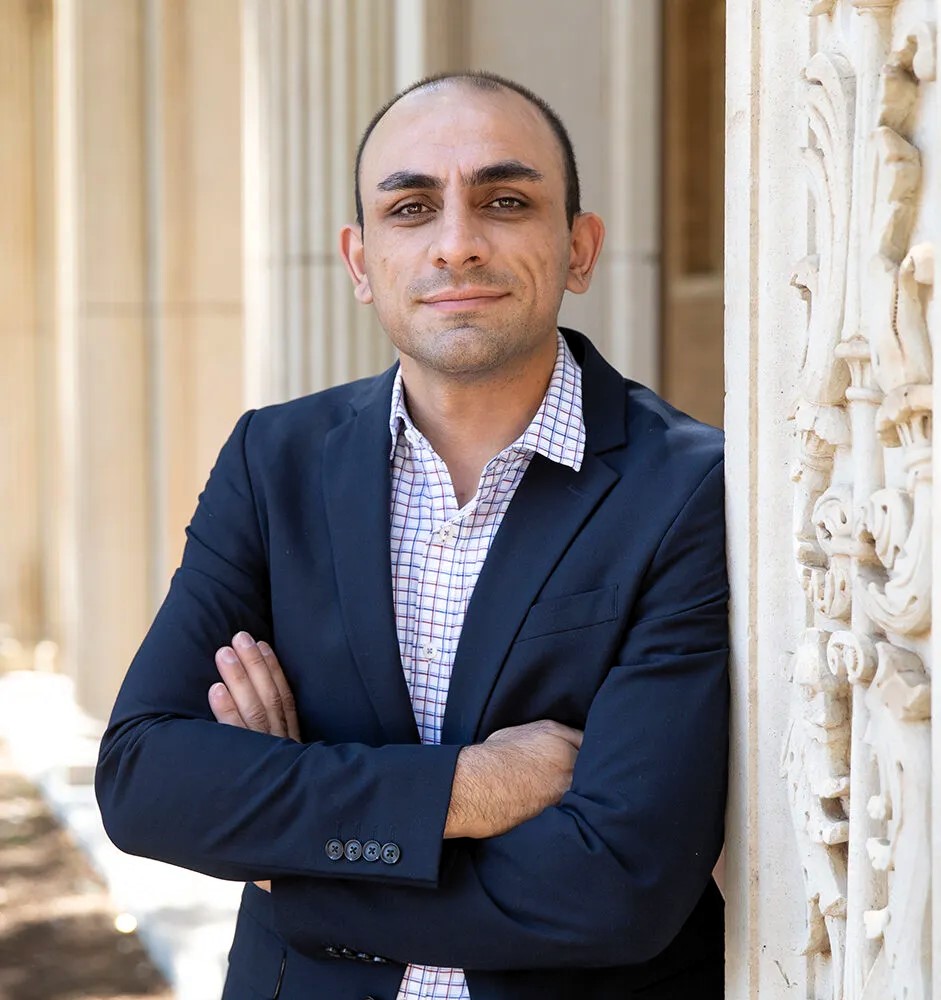
Mahdi Malmali
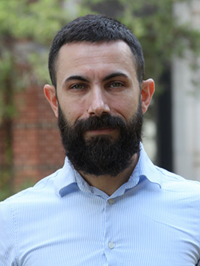
Michele Galizia
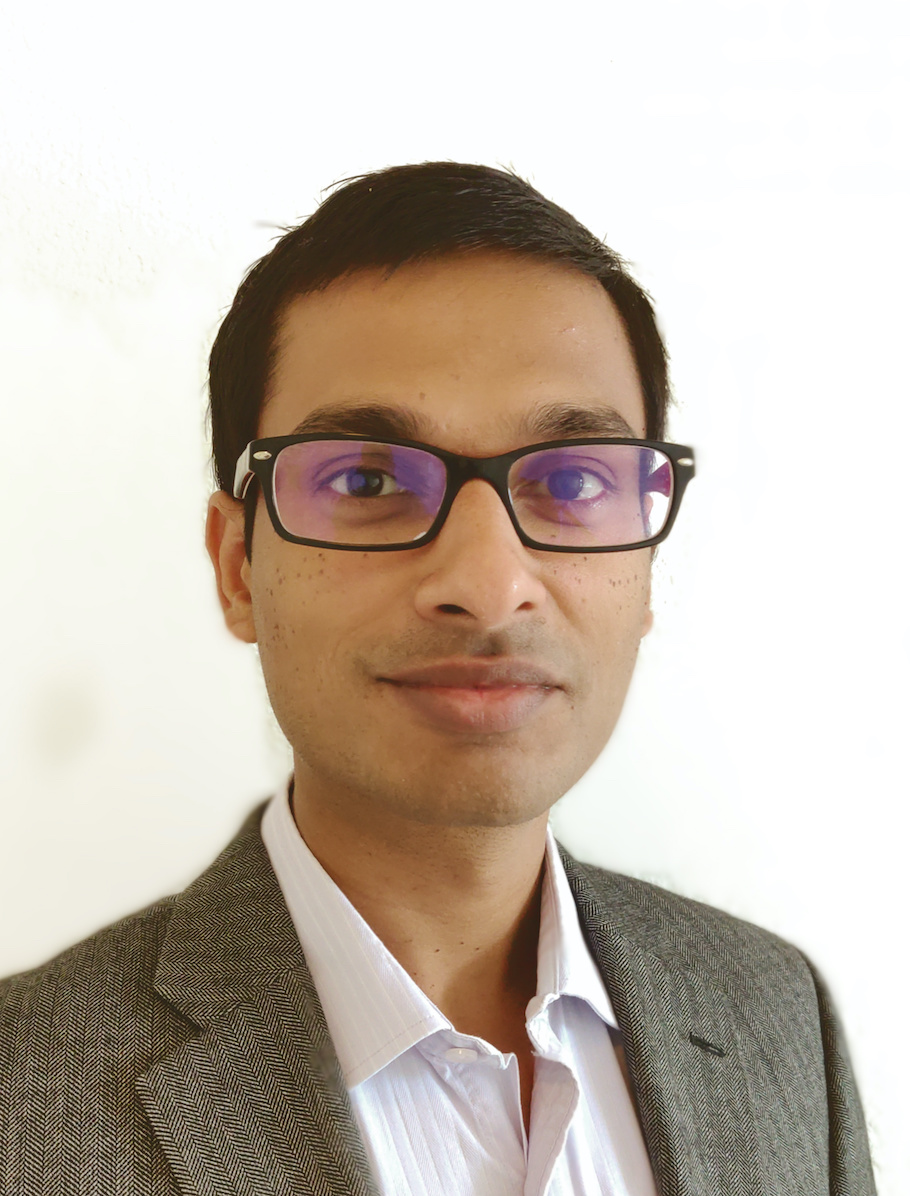
Nitish Mittal
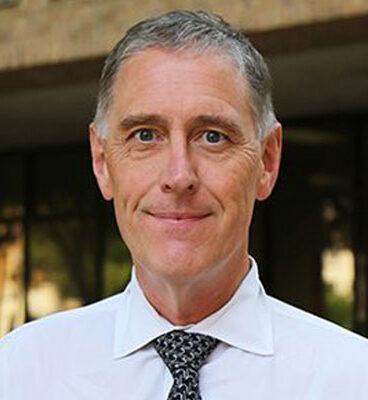
Benny Freeman


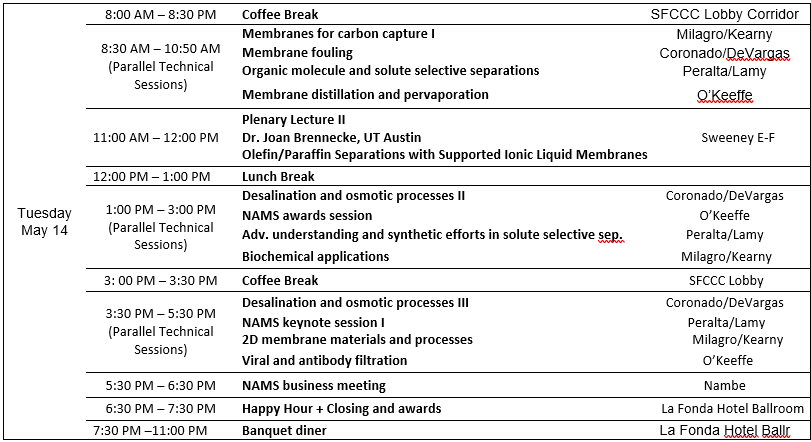

You can find the preliminary program book in the link below.
NAMS-2024-Program-Book - Preliminary 04-22Link for download:
NAMS-2024-Program-Book – Preliminary 04-22.pdf
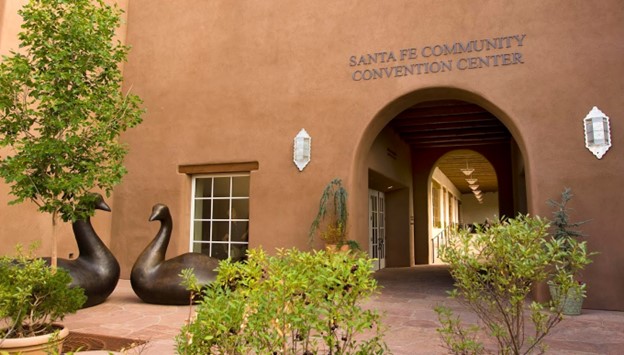
Venue: Santa Fe, Community Convention Center, 201 W Marcy St, Santa Fe, NM 87501 (https://www.santafe.org/meetings/)
Hotel rooms are available at the negotiated group rates (plus taxes) on the nights of May 10-15, 2024.
1. Drury Hotel (9 mins walk to the Community Convention Center): $239 per night – rooms available to book at this negotiated price until April 8, 2024.
Link:https://www.druryhotels.com/bookandstay/newreservation/?groupno=10063862 SOLD OUT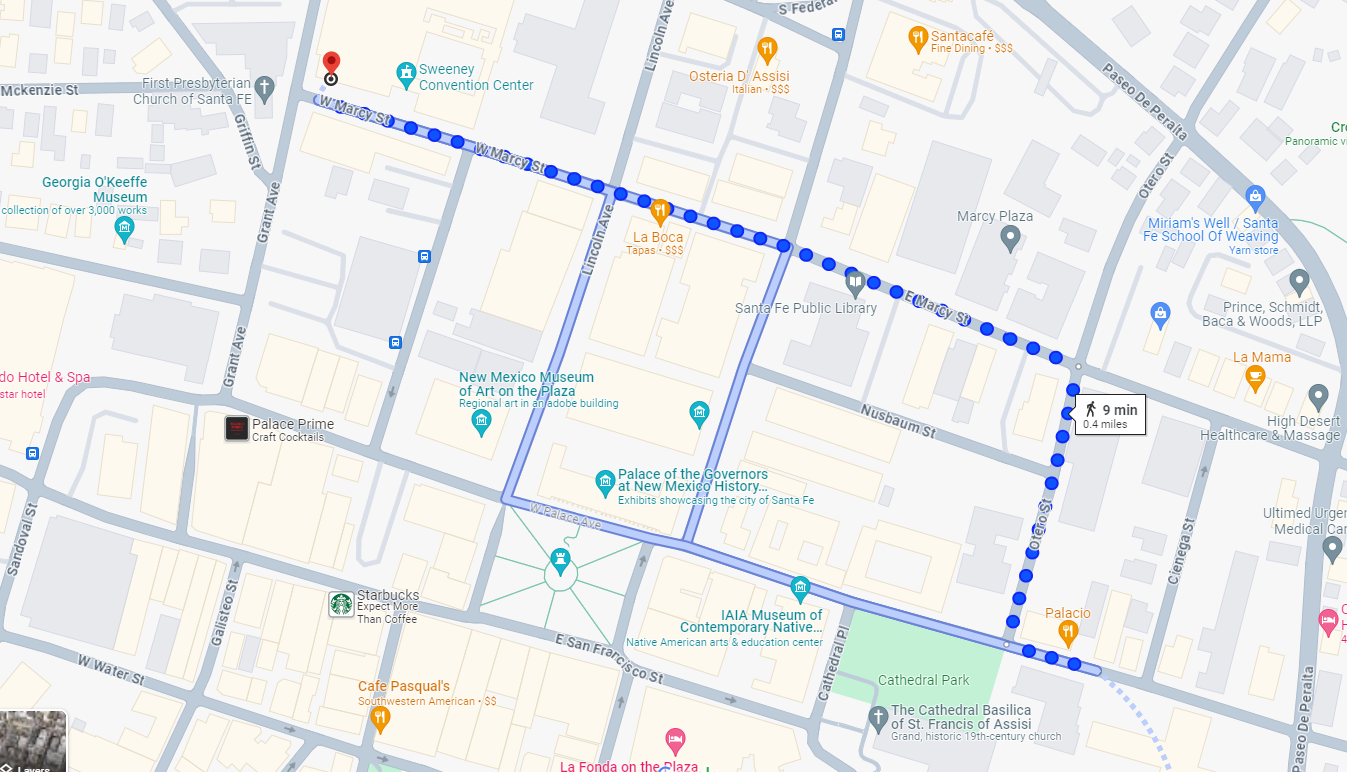
2. The Sage (20 mins walk/4 mins drive to the Community Convention Center): $99 per night – rooms available to book at this negotiated price until April 9, 2024.
Rooms: Traditional King and Traditional Double Quine Room
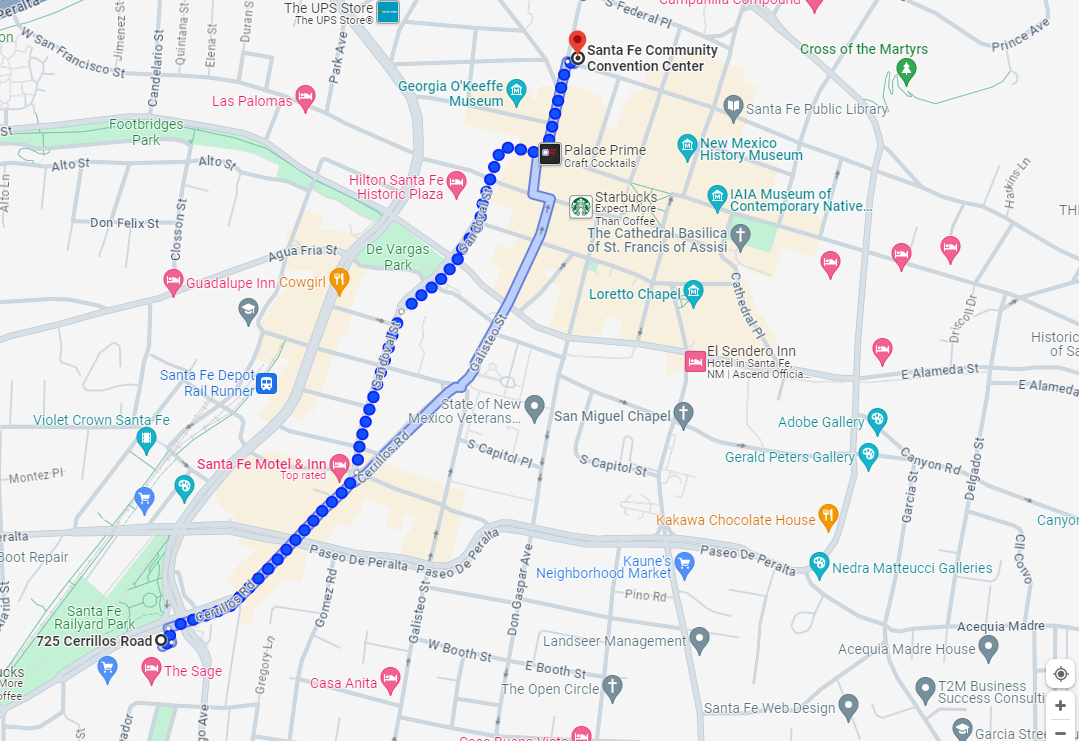
3. Hilton Santa Fe Historic Plaza (4-6 mins walk to the Community Convention Center): $229 per night – rooms available to book at this negotiated price until April 9, 2024.
Link: https://group.hilton.com/uxaczi

Other hotels close to the Community Convention Center are:
- La Fonda (4 mins walk)
- Rosewood Inn of the Anasazi (3 mins walk)
- Hotel St. Francis (4 mins walk)
- Eldorado Hotel and Spa (2 mins walk)
There are several direct flights to Santa Fe.
The second largest/closest airport is Albuquerque International Sunport (IATA airport code: ABQ) which is 66 mile far from Santa Fe.
If you are flying to Sunport, then you can feel free to book the Groome shuttles (https://groometransportation.com/santa-fe/?&sd_client_id=215627ea-862e-4144-ad16-753898a9d104) at a discounted price, as follows:
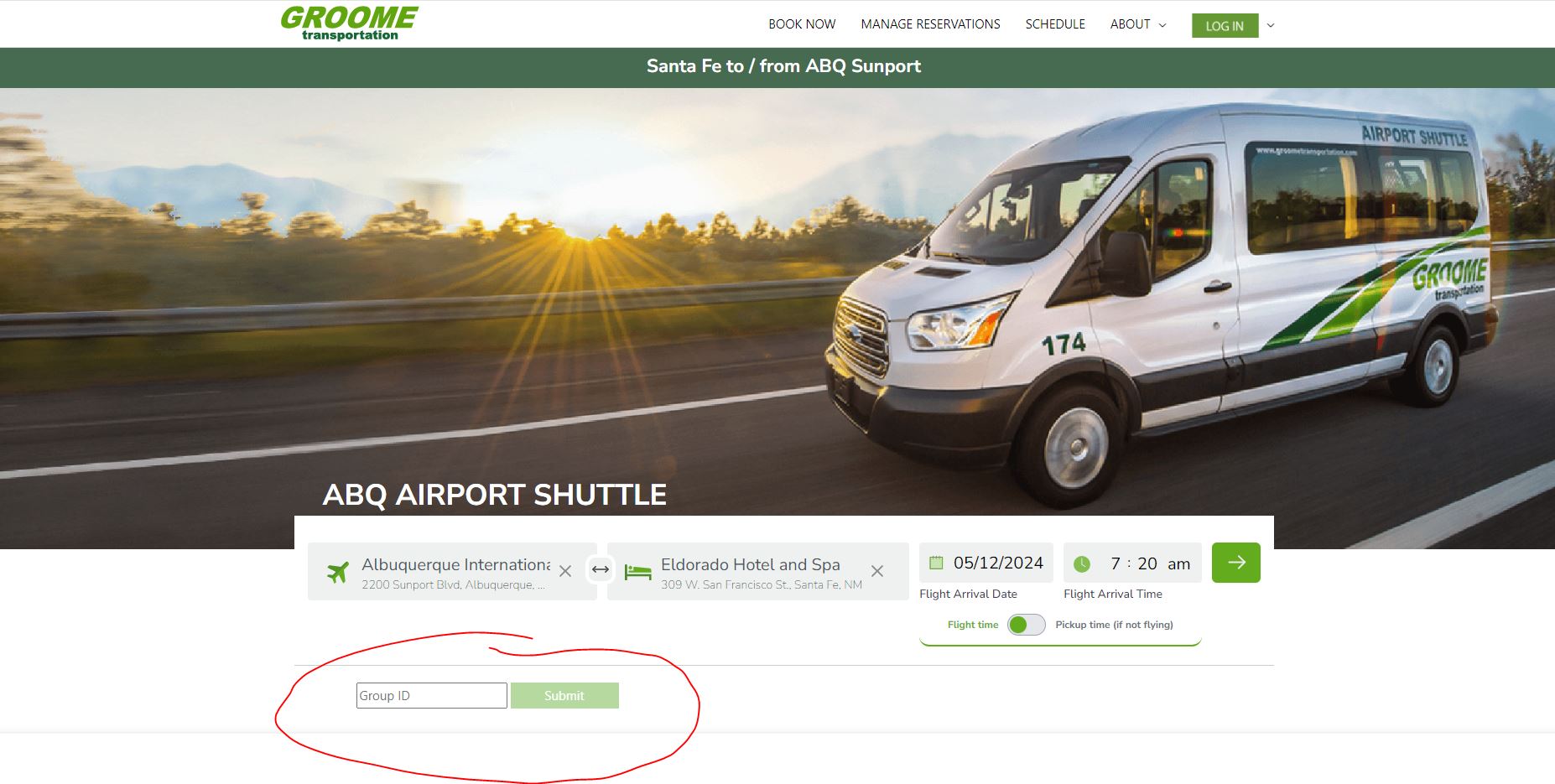
The timetable for the shuttle is below (the two red crossed times are not available at the moment):

The Groome policy (including luggage policy) can be found here in this pdf file:
Groome Transportation Terms and ConditionsCheaper (but longer) option
Public Transport ($4 for students and $9 for regular passengers; total 2 hr 30 min)
Take the ABQ Ride shuttle (Route 50) from ABR Airport to A.T.C. (Bay A). This is the nearest bus stop to Albuquerque Rail Runner Downtown Station. Take the New Mexico Rail Runner Express from the Downtown Albuquerque to Santa Fe Depot station. The hotels are about ~15 minutes walk from the Santa Fe Depot station. Some hotels may also offer a free pick up.
· Take the ABQ Ride shuttle (Route 50) from ABR Airport to A.T.C. (Bay A) (FREE) and walk to the Albuquerque Rail Runner Downtown Station
https://maps.app.goo.gl/oU2aPQqpERxYk4i37 (Google Map)
https://live.goswift.ly/abq-ride/route/50/stop/3805 (ABQ Ride)
- Take the New Mexico Rail Runner Express to the Santa Fe depot. You will need a 5-zone ticket which costs $4 for students and $9 for regular passengers.
https://www.riometro.org/232/Train-Fares (Rail Runner Express)
- Sage Hotel is ~10 min walk from Santa Fe Depot Station https://maps.app.goo.gl/A9cdmTBXv8z4NRJf8

Dr. Goetz Baumgarten
Head of the Membranes Innovation Growth Field, Evonik
Bio: After studying chemistry at the University of Hannover and earning a doctorate in the treatment of landfill leachate with membrane processes, Dr. Baumgarten began his career at Amafilter Deutschland GmbH in Düsseldorf in 1997 as project manager. From 2001, he was product manager for the Membrane Technology Product Line for the entire Amafilter Group (today: Mahle Industrial Filtration) before moving to Evonik in 2005. At Evonik, Dr. Baumgarten initially headed the Membrane Technology Group in the Process Technology & Engineering Service Unit before assuming the position of Business Manager SEPURAN in July 2010. Since January 2016, he has been responsible for the Membrane Business of Evonik.
Membranes: Smart Enabler for a Sustainable Gas Economy
Sweeney Ballroom E-F, 11:00 am – 12:00 pm, Monday, May 13th
Backward integration is the key driver of Evonik’s innovative strength in membranes. Thanks to the group’s many years of expertise in polymer chemistry and backward integration, Evonik adjusts the membrane properties already at the development stage of the base material—the high-performance polymer—to produce particularly selective, productive and robust membranes that can withstand extreme pressures and temperatures in challenging conditions.
SEPURAN® membranes are polymer-based hollow-fibre membranes designed to separate gases such as methane (CH4), nitrogen (N2), or hydrogen (H2) from gas mixtures. The advantages of Evonik’s membrane technology are more precise separation of the gases, higher productivity and their outstanding robustness and lifetime based on the entirely crosslinked polymer basis. SEPURAN® Green membranes and our 3-stage upgrading process shaped the market for biogas upgrading with now more than 1000 references worldwide. SEPURAN® N2 membranes for efficient nitrogen generation are used, for example, to inert aircraft tanks. SEPURAN® Noble membranes extract hydrogen transported through natural gas pipelines selectively from the CH4/H2 gas mixture at the delivery points. SEPURAN® NG as well as PURAMEM® membranes enable efficient natural gas processing from gas sources with high CO2 and/or H2S concentration. SEPURAN® and PURAMEM® membranes are being successfully used in more than 2,000 system installations worldwide.
Following the Sustainable Development Goals of the United Nations, Sustainability is the key growth driver and the cornerstone of Evonik’s product portfolio, investments and innovation management and thus an integral part of Evonik’s strategy. With the innovative gas separation SEPURAN®, PURAMEM® as well as the advanced ion conducting DURAION® membrane technologies, the specialty chemicals company makes the transition of today’s conventional energy supply to a sustainable gas economy of tomorrow possible.
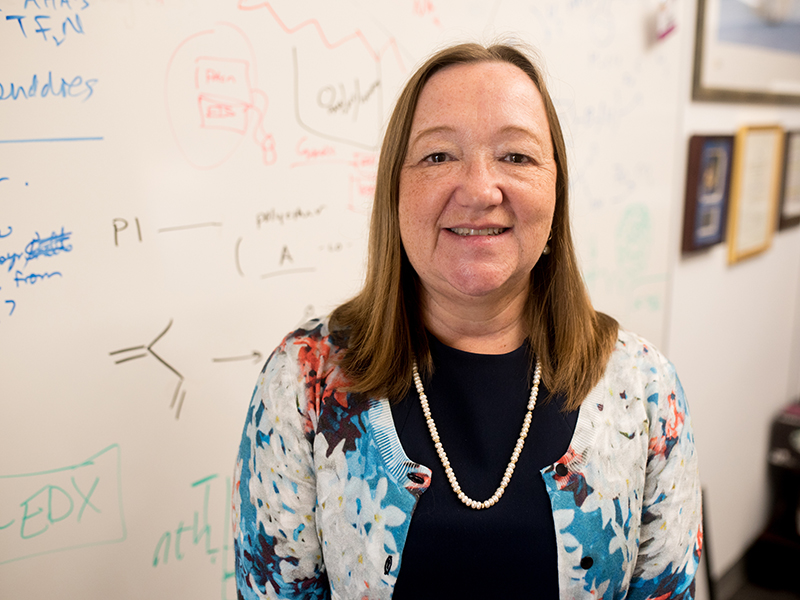
Dr. Joan Brennecke
Professor, Cockrell Family Chair in Engineering # 16
Department of Chemical Engineering
The University of Texas at Austin, USA
Bio: Dr. Joan Brenneckee is currently Cockrell Family Chair in Engineering #16 in the McKetta Department of Chemical Engineering at the University of Texas at Austin. She began her academic career at the University of Notre Dame after completing her Ph.D. and M.S. (1989 and 1987) degrees at the University of Illinois at Urbana-Champaign and her B. S. at the University of Texas at Austin (1984). Her research interests are primarily in the development of less environmentally harmful solvents. These include supercritical fluids and ionic liquids. In developing these solvents, Dr. Brennecke’s primary interests are in the measurement and modeling of thermodynamics, thermophysical properties, phase behavior and separations. Major awards include the 2001 Ipatieff Prize from the American Chemical Society, the 2006 Professional Progress Award from the American Institute of Chemical Engineers, the J. M. Prausnitz Award at the Eleventh International Conference on Properties and Phase Equilibria in Greece in May, 2007, the 2008 Stieglitz Award from the American Chemical Society, the 2009 E. O. Lawrence Award from the U.S. Department of Energy, and the 2014 E. V. Murphree Award in Industrial and Engineering Chemistry from the American Chemical Society. She served as the Editor-in-Chief of the Journal of Chemical & Engineering Data from 2010-2020. Her 250+ research publications have garnered over 24,000 citations (ISI), with an H-index of 66. She was inducted into the National Academy of Engineering in 2012 and served as the Chair of The National Academies study on A Research Agenda for a New Era in Separations Science, published in 2019.
Olefin/Paraffin Separations with Supported Ionic Liquid Membranes
Sweeney Ballroom E-F, 11:00 am – 12:00 pm, Tuesday, May 14th
Olefins are a key building block of the petrochemicals industry because they are precursor materials for numerous chemical products and plastics. The current commercial production method is steam cracking of ethane followed by cryogenic distillation of olefin/paraffin mixtures, which involves large energy consumption and greenhouse gas footprint (0.3% of world energy use). Membranes using facilitated transport show promising olefin/paraffin selectivity due to the presence of carriers that specifically complex with olefins. We have developed facilitated transport-based supported ionic liquid membranes (SILMs) with excellent olefin/paraffin selectivity and permeability, using mixtures of silver salts and ionic liquids (ILs). The metal ions dissolved in the IL act as carriers and the IL medium allow the carriers to be mobile in the membrane pores. Previously, facilitated transport-based membranes for olefin/paraffin separation have not been viable because the silver carriers deactivate rapidly in the presence of any H2, which chemically reduces the silver salts to inactive silver metal. We show that the proper choice of IL results in stable olefin/paraffin separation performance even after extended exposure to H2. Using Raman spectroscopy, we show how the formation of anion aggregates play a key role in the suppression of silver metal nanoparticle formation. Moreover, we have modified the anodic aluminum oxide (AAO) membrane supportss with uniformly sized ~6-8 nm diameter cylindrical silica mesopores to improve the blow-out transmembrane pressure (TMP). This modification increases the feasible TMP for various ionic liquids from ~4 bar to more than ~20 bar. Additionally, the liquid in the membrane at depths where the AAO membrane has not been modified (i.e., greater than a few microns) is expelled from the large pores, reducing the effective thickness of the liquid in the membrane, and increasing permeance. This approach is analogous to asymmetric polymeric membranes. This innovation paves the way for selective olefin/paraffin separation with dramatically reduced energy consumption, that is viable from laboratory to commercial scale operation.
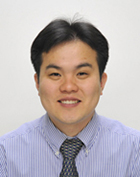
Dr. Ho Bum Park
Professor and Department Chair, Energy Engineering
Hanyang University, South Korea
Bio: Dr. Park is a Professor in the Energy Engineering Department at Hanyang University (HYU) in Seoul in Korea. He received his Ph.D. in Chemical Engineering from HYU in 2002 and worked as a postdoctoral fellow for the University of Texas at Austin (UT Austin) between 2005 and 2008. He joined HYU as an assistant professor in 2008, an associate professor in 2011, and a full professor in 2017. He worked as a visiting scholar at the Department of Chemical Engineering of UT Austin, USA (2014). He has established a state-of-the-art research laboratory for advanced membrane research at HYU since 2008 and a dozen research collaborations and international scholar exchange programs. During his service period at HYU, he has published more than 140 peer-reviewed SCI papers, including some of the highest-impact scientific journals, contributed 8 book chapters, and more than 90 patents. He has served on the Membrane Society of Korea (MSK) Board of Directors for 14 years. He now serves as a Department Chair of Energy Engineering at Hanyang University. He has organized many international and national conferences and also served as an editorial board member of five scientific journals related to chemical engineering and materials science and engineering.
Beyond the upper limit? What we are missing & challenges
Sweeney E-F, 11:00 am – 12:00 pm, Wednesday, May 15th
Dr. Robeson first presented the correlation between permeability and selectivity of polymeric materials for various gas pairs of interest in 1991. This brought awareness to the separation limits of polymeric materials for gas separation membranes and motivated much research to overcome them. Subsequently, this concept has also been applied to other types of membranes, such as ultrafiltration, ion exchange, and desalination membranes. These membranes are evaluated based on their water permeance, solute rejection, ion conductivity, water uptake, water permeability, and water/ion selectivity. This has led to a renewed focus on developing membrane materials that can surpass their respective separation limits. Currently, the range of materials that can be used as membranes extends beyond polymers. New materials such as carbons, silica, zeolites, metal-organic frameworks, and 2D materials are being investigated as separation membranes. These materials exhibit superior permeability and selectivity properties that surpass the upper limits. It is important to note that all evaluations are objective and clearly marked as such. Although there are numerous excellent membrane materials available, only around ten are currently used in membrane processes. This presentation will address some of the crucial aspects that are lacking in membrane R&D and the challenging work that lies ahead. Based on my previous experience in R&D for gas separation and other membranes, this presentation discusses the current status of various membrane materials that have been and are being developed. It also comments on the many factors that need to be considered before a material becomes a viable separation membrane in the near future.
We will have four workshops this year, as below. The dates of the workshops are not yet finalized. The water and measurement workshops will be likely scheduled for Saturday, and the gas and bio workshops will be most likely scheduled on Sunday.
Membranes for Water Treatment & Reuse
Lecturers:
Dibakar Bhattacharyya, University of Kentucky, DB@uky.edu
Yoram Cohen, University of California Los Angeles, yoram@ucla.edu
Ben Weaver, Solecta, ben.weaver@solectamembranes.com
Abstract: Membrane processes are finding wide applications ranging from water treatment to reactors to advanced bioseparations. Membranes are particularly useful for material recovery and for permeate reuse (such as, water recycle). The workshop is configured as a one day program of about 6 hours of lectures. Both desalination and toxic pollutant removal/destruction techniques will be discussed. The workshop topics include membrane selection criteria, practical information regarding configuration, performance and operating conditions (including RO process control and fouling aspects) of membrane technology applied to desalination of brackish and seawater, and wastewater reclamation systems, mixed-matrix membranes, and advanced functionalized/responsive membranes from metal capture to emerging pollutants (PFAS) detoxification. Membrane surface and pore functionalization approaches, reactive nanostructured for water detoxification will be part of the advanced membrane topics. The effects of feed water quality, pretreatment options, operating parameters and performance of membrane units and hybrid options will also be discussed. The workshop material will also include information on economics of membrane systems including drivers for membrane selection for various applications, module design, industrial applications, etc.
——————————————————————————————————————————————–
Measurement Methods for Membranes
Lecturers:
Uwe Beuscher, ubeusche@wlgore.com, W.L. Gore & Associates, Inc.
John Pellegrino, john.pellegrino@colorado.edu, University of Colorado at Boulder
Christine Duval, Case Western Reserve University
Abstract: This workshop provides an overview of the entire field of membrane science, technology, and applications through measurements, and is therefore an excellent resource for novices with a technical background, as well as, seasoned veterans interested in broadening their scope (or having a refresher.) The workshop will provide a survey of the various physical and chemical properties of membranes (and membrane process characteristics) that are measured, and the equipment (instruments) and techniques used, along with their underlying principles. A mixture of classical, novel, and resource-intensive techniques are included.
Syllabus topics include: materials and structures; gas and liquid phase transport; mechanical and physical metrology techniques; porometry; surface and chemical measurements; visualization and scattering techniques; and special topics illustrating emerging characterization approaches. The workshop will finish with an industrial perspective segment that features a few invited panelists who will comment on how their organizations use membrane characterization to advance (or maintain) their business objectives.
Two weeks prior to the workshop a set of journal articles will be made available to the registrants. These articles will be used in class discussions. Also, all registrants will be asked to fill out a survey with questions and topics of particular interest to them.
The co-instructors combine many decades of membrane science and technology experience in industry, academia, and government. Their expertises include both polymeric and inorganic membranes as applied to gases, organic liquids, and water over a broad range of separations and filtration applications requiring both dense and porous materials. They have all actively applied advanced and classical characterization methods throughout their careers.
Uwe Beuscher is a Technical Leader at W.L. Gore & Associates, Inc., the world leader in fluoropolymer materials for a wide variety of applications. Dr. Beuscher received his Diplom-Engineer degree in Mechanical Engineering from RWTH Aachen (Germany) and his Ph.D in Chemical Engineering from Clemson University (U.S.A.). After joining W.L. Gore & Associates, Dr. Beuscher contributed for over 20 years to developments in a wide variety of separation applications including adsorption, catalysis, chromatography, polymer fuel cells, gas-liquid contactors, barrier materials, gas separation, liquid purification, and advanced microfiltration. Currently, Dr. Beuscher is leading the Gore Mercury Control System Team, which explores novel ways to remove Mercury and SO2 from flue gases and waste gas streams. Dr. Beuscher has authored or co-authored more than thirty technical papers, book chapters, and presentations. He has served on various advisory boards and as the president of the North American Membrane Society (NAMS).
John Pellegrino founded this workshop in 1995 and has helped evolve it since then. He has held research and development positions at Rohm & Haas Co., duPont Inc., the National Institute of Standards and Technology (NIST), and Santa Fe Science and Technology Inc., and is currently a Research Professor in the Mechanical Engineering Department at CU-Boulder.
——————————————————————————————————————————————–
Membrane Gas Separations
Lecturers:
Benny Freeman, University of Texas at Austin, freeman@che.utexas.edu
Glenn Lipscomb, The University of Toledo, glenn.lipscomb@utoledo.edu
Tim Merkel, MTR Inc., tim.merkel@mtrinc.com
Abstract: This workshop will cover the entire spectrum of membrane-based gas and vapor separations: from the materials science of gas separation membranes and the fundamentals of membrane transport to the design and economics of industrial gas separation applications. This workshop should be of interest to membrane researchers as well as membrane practitioners.
Outline:
- Materials: Freeman, 9-10:30 AM
Material science of gas separation membranes and transport mechanisms
- Break: 10:30-10:45 AM
- Modules: Lipscomb, 10:45-12 and 1-2:15 PM
Module Manufacture (patent review)
- Scroll/spiral wound module formation
- Fiber bundle/tubesheet formation and types
- Header and case design
Module Performance
- Basic design equations for gas separations
- Hollow fiber versus spiral wound
- Module inefficiencies: fiber size/property variation & poor shell flow distribution
- Break: 2:15-2:30 PM
- Applications: Merkel, 2:30-5 PM
Basics of Gas Separation System Design
- Pressure ratio
- Multi-step and multi-stage configurations
Gas Separation Industry: History and Overview
Air Separation
- Nitrogen – enriched Air
- Oxygen – enriched Air
Hydrogen Separation
Natural Gas Separation
- Acid Gas Removal
- Nitrogen Removal
- NGL Recovery/Fuel Conditioning
VOC Removal/Recovery
Emerging Applications
——————————————————————————————————————————————–
Membranes in Bioprocessing
Lecturers:
John Cyganowski, MilliporeSigma, John.Cyganowski@emdmillipore.com
Herb Lutz, MilliporeSigma, herb.lutz@milliporesigma.com
Abstract: This workshop includes the use of membranes in bioprocessing for clarification, harvest, sterilization, virus retention, and protein concentration and buffer exchange.
MORNING SESSION 9AM-12 noon- Intro & Normal Flow Filtration
- Overview (30′ -10slides) Herb., key questions
- History
- Membrane types- show & tell
- Bioprocess Applications & role of mem
- NFF- clarification (30′-10 slides) Cyg
- Membranes, devices, applications, operation- pleated/disk/pod devices
- Pmax selection & sizing
- Selected implementation topics- ads vs size excl, variability
- NFF- sterilization (20’break, 50′-20 slides) Herb.
- Membranes, devices, applications, operation-cartridge/pod.
- Vmax selection & sizing.
- Validation & Integrity testing.
- NFF- virus retention (50′).
- Membranes, devices, applications, operation.
- Vmax selection & sizing.
- Validation & Integrity testing
AFTERNOON SESSION 1PM-5PM- Tangential Flow Filtration & Wrap-up
- TFF- Protein concentration and diafiltration (80′-27slides; 10′ break) Herb.
- Membranes, devices, applications.
- Operation- UF & DF- demo milk or w PXL50
- Selection & sizing
- Selected implementation topics-high conc?, HCUF, donnan, SPTFF?
- TFF- clarification (50′-20 slides; 20′ break) Cyg.
- Membranes, devices, applications, operation- cassette, prostak/fiber/spiral
- Selection & sizing
- Selected implementation topics-harvest/cell removal? Perfusion.
- Wrap-up (30′).
- Manufacturers, economics, references, trends, selected topics-quiz? Continuous, closed system
After taking the workshop, participants will be able to define process requirements and select among different filters and size and optimize their operation. The workshop is of interest for membrane researchers, process development scientists, plant operators, and technical operations.
Coming soon
Abstract Submission
- Abstract submission will open on January 7th, 2024
- Abstract Submission
will close on February 1st, 2024is extended to February 10, 2024. - Authors will be notified by late-March 2024
Abstract Submission Procedure (link)
Submission will be handled using the CMT platform. Authors can use their existing CMT account (or create a new one if they don’t have one) to submit their abstract. Please see the linked guide for “How to submit abstract using CMT account”. Please disregard multi-track, author agreement, and conflict of interest information in the guide. Please limit your abstract submission to 2000 characters, excluding any figures, illustrations, or tables.
This year we will use a “bucket” approach for abstract submissions, where the specific sessions we had in the previous years have been replaced with “big areas”. After all the abstracts in a bucket have been received, the organizing committee will work with the chair and co-chairs to sort the abstracts into more focused sessions. There are buckets associated with:
Advanced Membranes and Processes for Gas and Vapor Separations
This section welcomes contributions to highlight advancements in polymeric, inorganic, hybrid, and mixed-matrix membranes for gas and vapor separations. New approaches for the rational design, synthesis, characterization, modeling, as well as strategies on fabrication and scale-up of functional membrane materials exhibiting superior separation performance in terms of permeability/permeance, selectivity, and long-term stability, are of special interest. Possible targets may include but are not limited to, CO2 separation and sequestration, hydrogen purification, helium recovery, olefin-paraffin separation, and emerging processes. Connections between fundamental material science/transport aspects and scale-up/applications are particularly welcome.
Water Treatment, Desalination, and Reuse
The scope of the session includes novel materials, methods, and modifications for separation and purification in chemical and environmental engineering systems involving water treatment, desalination, and water reuse applications. These include any membrane separations, except for methods intended for analytical purposes.
Membrane Process Development and Process Intensification
This session ranges from feasibility studies to membrane screening (identifying the best membrane for an application), process intensification, as well as simulations and scale-up. Process intensification is usually implemented through the design of new equipment that combines multiple unit operations or the design of new process intensifying methods. This session includes a focus on the use of membrane reactors to improve process performance in a growing range of applications, including chemical and petrochemical processing, cell culture, water desalination and filtration, and bioseparations. Abstracts are sought that describe new experimental and computational developments in membrane process and membrane reactor fundamentals and applications.
Membrane Formation, Manufacturing, and Module Design
This session will include talks related to innovative approaches to membrane preparation that address longstanding challenges related to membrane synthesis and manufacturing and quality control. Also included will be talks on creative approaches to address technical gaps and current weaknesses of module design. The session will also include approaches to enable the use of new materials in scalable membrane formation.
Membranes Designed for Solute Selective Separations
This session invites both computational and experimental abstracts focused on membrane materials and processes specifically designed for solute-selective separations (ion-ion, organic-organic, etc.) for both gas and liquid feeds. Specific topics of interest include but are not limited to, the design and synthesis of novel polymeric and/or inorganic membranes, structure-property relationships that drive high selectivity, thermodynamics of solute-membrane interactions, kinetics of solute diffusion in membranes, in-depth characterization of solute selectivity, and mechanistic insights to selectivity. Relevant application areas may include rare gas separations, organic solvent reverse osmosis, and ion-ion separations in resource recovery, among others.
Membranes for Medicine and Pharma
This section welcomes contributions to highlight advancement in membranes for bio-separation and artificial organs, with the exception of methods for analytical purposes and biomaterials. New approaches for the rational design, synthesis, characterization, modeling, as well as strategies for fabrication and scale-up of the next generation of functional membrane materials in the areas referenced above, are of special interest.
Keynote on Decarbonization (limited spots available)
This section welcomes abstracts that can highlight the important role of membranes in decarbonization to reach the goals for 2050 net zero. Contributions that describe how the membranes can eventually lead to i) enhanced energy efficiency in chemical refining, separations, and desalination, ii) producing clean carbon-free liquid fuels, iii) capture and sequestration, iv) electrification, and v) resource recovery are of particular interest. We anticipate that half of the session will be dedicated to senior scientists and half to young scientists.
Other
This general section welcomes contributions that do not specifically fit in any of the sessions presented above.
Dear All,
Thank you for your patience while we process the abstracts. We are working through the CMT software as we moved to a bucket approach. To release the program 45 days in advance, we wanted to post a preliminary program and the decisions on the abstracts here. Below, you can find a tentative plan of NAMS 2024. A more detailed program book will be published in early April. Hopefully, this will help the attendees plan their trip to Santa Fe.
To our student community: We are planning a students’ conference which would include a workshop and a career panel. The workshop will be held on Sunday afternoon (approx. 2-5 pm) and is free to attend. Please plan your travel accordingly to participate.
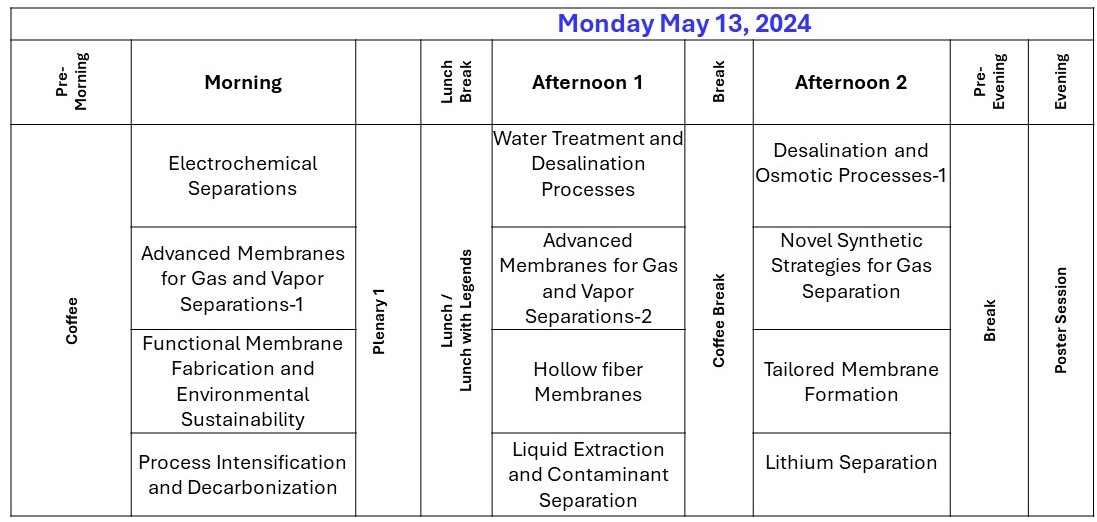
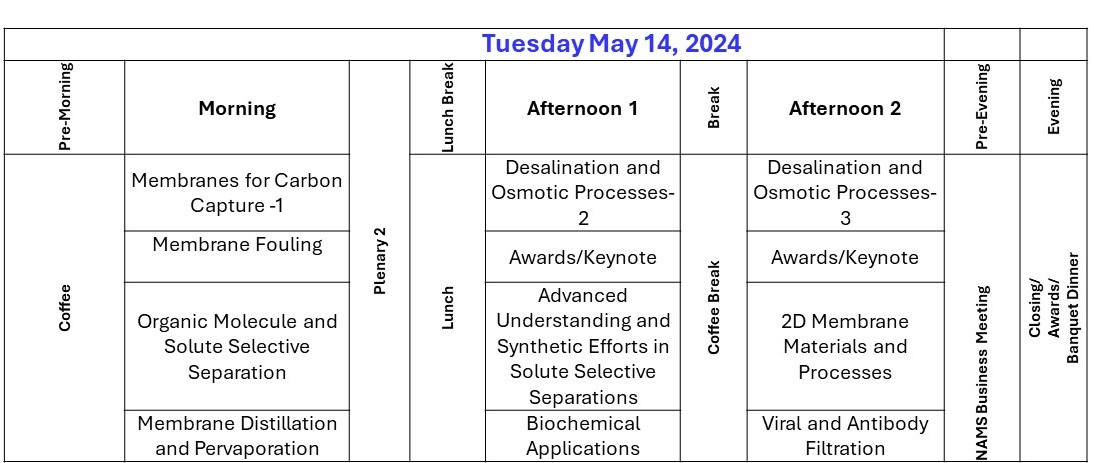
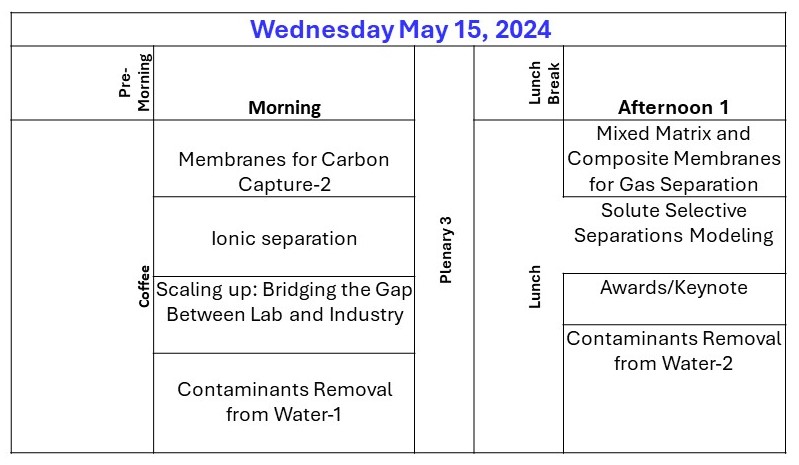
The abstract decisions can also be found here. The decisions are divided into two files: Oral and Poster Presentations. Please refer to your abstract submission number. You may also use the “Find” option in the pdf files to find your abstract.
Oral Presentations:
NAMS 2024 Oral PresentationsPoster Presentations:
NAMS 2024 Poster PresentationsYou may download the pdf version from the following links:
Link: NAMS 2024 Poster Presentations.pdf
Link: NAMS 2024 Oral Presentations.pdf
NOTE: this is just a way to help you finalize your travels. We need the presenters (both oral and poster) to inform us of their decisions (hopefully through the Microsoft CMT Abstract Submission Platform) to confirm their decision to present and finish the registration at least 20 days before the event.
Dear International Participants,
https://forms.office.com/r/BVBmvN9Sgb
Thanks,
Mahdi Malmali (Meeting chair)
Assistant Professor
Chemical Engineering
Texas Tech University
mahdi.malmali@ttu.edu
Programming
- The preliminary program will be available on March 25th, 2024
- The final program will be available on April 10th, 2024
Coming soon
To be announced soon
We appreciate your continuous support for the NAMS community. Please enter your information in the link below and we will contact you when the reviewing of the abstracts starts or if we need your help with chairing and co-chairing the sessions.


